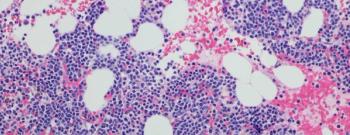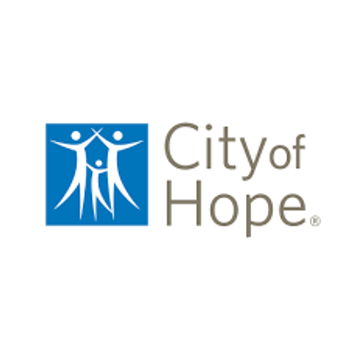
This new study, conducted among persons living with melanoma in situ, investigated the possibility of identifying clinicopathological predictors of local recurrence.

This new study, conducted among persons living with melanoma in situ, investigated the possibility of identifying clinicopathological predictors of local recurrence.

Systemic corticosteroids were more commonly prescribed vs other systemic drug options in Germany for patients with atopic dermatitis (AD) despite their unfavorable risk-benefit profile, with a substantial economic burden cited among these populations.

Coverage of our peer-reviewed research and news reporting in the health care and mainstream press.

New York state and San Francisco declare monkeypox public health emergencies; COVID-19 boosters set for the summer have been scrapped in favor of fall boosters; HHS announces that insurers must cover birth control.

Following a time-restricted eating schedule, limited to a 10-hour window, provides beneficial metabolic effects and the potential for weight loss in patients with type 2 diabetes, according to a new study.

The study also found broad tolerability, with 98% of patients remaining on the therapy after 12 months.

Mechanical stimulation, including finger pressure on discrete areas of the chest wall and neck, triggered reproducible coughing in about 50% of patients with chronic cough, indicating that chronic cough may be caused by the central convergence of somatic and visceral neural stimuli.

There was also an association between outpatient visit burden and comorbidities and the number of inflammatory upper airway diseases.

Diagnostic accuracy for eosinophilic esophagitis (EoE) was higher when white light images were used with linked color imaging rather than alone, suggesting that linked color imaging may be used to reduce diagnostic disparities among endoscopists.

US patients with chronic obstructive pulmonary disease (COPD) managed in primary care settings have high exacerbations, symptoms, and treatment burdens, according to an analysis of electronic health record data and patient-reported information/outcomes.

Elaine Goodman, MD, MBA, clinical lead for population health management at Mass General Brigham, explains how patient access and engagement with health technologies, and the ways these technologies are developed, has evolved.

Authors explained how multiple myeloma emerges from earlier clinical phases and the tumor’s microenvironment in the early course of the disease plays a critical role in the survival of myeloma cells.

Senator Joe Manchin, D-West Virginia, ended his opposition to the Inflation Reduction Act of 2022, paving the way for reductions in some Affordable Care Act subsidies and action on drug pricing; AbbVie’s Allergan agreed to pay more than $2 billion in opioid settlements; a study found vitamin D supplements do not reduce bone fracture risk.

To accurately understand the progression or control of a condition, physicians require ready access to key indicators relevant to that illness. The industry should do a better job of making them available.

Clinical trials and targeted agents do not appear to affect health care–related quality of life, however.

For the first time, the CDC has identified in Mississippi dirt and water samples a bacteria that causes a rare and sometimes fatal disease called melioidosis, which is common in low-income tropical countries and one that scientists have been warning about for several years.

A team of investigators from across the United States investigated a potential connection between patients’ health insurance literacy and their reported financial hardship.

The number of monkeypox cases in the United States is close to 3600, the CDC said this week, and on Wednesday, HHS approved a supplement to the biologics license for a vaccine made by Bavarian Nordic to prevent smallpox and monkeypox.

Medicare beneficiaries with heart failure who are Black or female were less likely to receive a left ventricular assist device (LVAD) implantation compared with White and male beneficiaries.

Teva Pharmaceuticals tentatively agreed to a $4.25 billion settlement related to opioids; CMS released the Maternity Care Action Plan to improve maternal health outcomes and reduce inequities; a Texas lawsuit claims mandatory pre-exposure prophylaxis (PrEP) coverage violates the Religious Freedom Restoration Act.

Probability of continuous glucose monitoring device use was highest for patients with type 1 diabetes (T1D) in middle adulthood, decreasing as older age increased.

City of Hope has announced that a patient living with HIV, who received a stem cell transplant from an unrelated donor to treat acute myelogenous leukemia, has been in remission from both diseases since 2019.

A recent study found that lipid dysregulation was predictive of the risk of chronic kidney disease (CKD) and occurred years before the onset of CKD.

Medication risk scores analyze an individual’s medication regimen to look for the potential for simultaneous, multi-drug interactions, which can cause adverse drug events and other medication-related harms.

The Institute for Clinical and Economic Review (ICER) released the report, which supports the long-term value of betibeglogene autotemcel (beti-cel) for the treatment of beta thalassemia.

A new case report highlights the difficulties in pinning down spinal muscular atrophy (SMA) when it presents in a mild form.

While a 1-year course of methotrexate improved physical function, pain, morning joint stiffness, and joint inflammation, it did not prevent the development of clinical arthritis.

Faster motor and cognitive progression of Parkinson disease was found in patients with higher baseline cerebrospinal fluid neurofilament heavy levels.

A new study highlights potential therapies to decrease cardiovascular risk in people with systemic lupus erythematosus (SLE) and identifies biomarkers that may indicate a heightened risk.

This new study investigated a potential link found that apnea hypopnea index during the rapid eye movement (REM) sleep stage was associated with hypertension in patients with obstructive sleep apnea.

259 Prospect Plains Rd, Bldg H
Cranbury, NJ 08512
© 2025 MJH Life Sciences®
All rights reserved.
